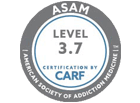Dysthymia, as with all forms of depression, is a mood disorder defined by your thoughts, behaviors, and feelings. Unlike medical conditions, people with a dysthymic disorder don’t have obvious physical symptoms. Instead, people who suffer from this mental health disorder struggle with chronic feelings of hopelessness. A consistently depressed mindset can result in mental and physical fatigue that lasts for years. Due to the persistent nature of dysthymia, it is also called persistent depressive disorder (PDD).
To understand what dysthymia really is, it is helpful to know the signs, symptoms, and benefits of treatment for persistent depressive disorder.
Persistent Depressive Disorder Explained
Persistent depressive disorder, also called dysthymia (dis-THIE-me-uh), is a long-term form of depression. While dysthymia is often described as a “mild” form of depression, people who suffer from the disorder are plagued with a persistently low mood that can be disabling.
Have you ever thought, “I can’t have depression—I’m not stuck in bed all day crying?” If so, you may not have clinical depression. However, suppose you, like many others, are suffering from a persistent depressive disorder. In that case, you may not experience all the debilitating symptoms of major depression, but you may still have trouble functioning day-to-day.
It’s important to remember, many people struggling with depression have a difficult time making sense of what they are experiencing. Often, people who struggle with dysthymia blame themselves for not being able to “get over it.”
No matter what other people say, your feelings of sadness, fatigue, and hopelessness are real. Seeking help for your mental health is not only normal, but it is the best way you can help yourself and start feeling better.
What Qualifies Someone as Having Dysthymia or PDD?
People with persistent depressive disorder (PDD) experience a range of mild depressive symptoms. The Diagnostic and Statistical Manual of Mental Disorders (DSM-5) defines persistent depressive disorder (dysthymia) as a combination of chronic major depressive disorder and dysthymic disorder symptoms.
According to the DSM-5, in order to recieve a diagnosis of dysthymia, you must experience several of the related symptoms for at least two years:
- Poor appetite or overeating
- Insomnia or hypersomnia
- Low energy or fatigue
- Low self-esteem
- Poor concentration or difficulty making decisions
- Feelings of hopelessness
The symptoms of dysthymia may also cause distress or impairment in social, occupational, or other important areas of functioning. It’s also important to note that the symptoms of persistent depressive disorder (PDD) are not a side effect of alcohol or drug abuse.
While dysthymia is a less severe form of depression, the symptoms are chronic. This means it is a long-lasting mental health condition, specifically lasting two years or more, that requires ongoing medical attention. It is also important to note that, while persistent depressive disorder is not severe in terms of a depressive disorder, you can still experience periods of mild, moderate, or severe depressive symptoms depending on your current mood.
If you have any of these symptoms, it’s important to see a mental health professional for an evaluation. Dysthymia is a treatable condition, and with proper treatment, you can feel like yourself again.
Short-Term Symptoms of Persistent Depressive Disorder
As a chronic depressive disorder, persistent depression comes with a long-term low mood that lasts for two or more years. If you have been struggling with dysthymia, it’s likely you have noticed the short-term effects persistent depression has on your life.
You may lose interest in your daily routine, which can lead to a lack of productivity around the house and in work settings. It is also common for you to experience feelings of inadequacy as a result.
Short-term symptoms of persistent depressive disorder:
- Sadness
- Indecisiveness
- Emptiness
- Increased irritability
- Fatigue, lacking energy
- Trouble concentrating
- Loss of interest in daily activities
- Lacking motivation and ambition
- Decreased activity and productivity
- Poor eating habits
- Difficulties sleeping
- Suicidal ideation (thoughts of suicide)
Sometimes, people with persistent depression can “power through” daily activities for short periods of time, which is why the disorder is commonly known as high-functioning depression. While on the outside, other people may think you function normally, you may feel crushed under the weight of your daily tasks.
In fact, it is common for those suffering from high-functioning depression to feel this way. While you may not experience all the symptoms of major depression, the symptoms of persistent depression still make it difficult to function normally on a day-to-day basis.
In general, people with persistent depression learn maladaptive coping skills that “help” them deal with the symptoms of their long-term low mood. As a result, many people can put up a front, learning how to smile through work meetings and family gatherings. However, it takes a lot of energy to put on a mask for others. Smiling through the pain can be draining, and often leaves you feeling worse in the end.
Long-Term Symptoms of Persistent Depressive Disorder
If you are experiencing long-term symptoms of persistent depressive disorder, you may struggle with low self-esteem and a constant feeling of inadequacy. Symptoms of dysthymia can last for years, and begin to significantly interfere with your relationships, school, work, and daily activities.
Long-term symptoms of persistent depressive disorder:
- Low self-esteem and self-criticism
- Guilt and shame
- Worries over the past
- Hyperfixating on failures
- Excessive anger or apathy
- Undereating or overeating
- Difficulties falling and staying asleep
- Mental and physical exhaustion
- Recurring feelings of hopelessness
- Feeling incapable, inadequate, and worthless
- Avoidance and social withdrawal
- Increased thoughts of suicide
- Suicide attempts
It can be difficult to think of these thoughts, feelings, and behaviors as symptoms. To many of us, they can seem like decisions. It can seem like someone who is depressed has decided to be lazy and sleep all day, or they have decided to stop spending time with friends because they have a bad attitude.
A common symptom of dysthymia is low self-esteem, which impacts your self-worth and trickles down into every aspect of your life. Feelings of worthlessness or apathy can make routine tasks feel pointless. Similarly, if you struggle to concentrate for months due to dysthymia, it can feel utterly impossible to get caught up at work or in school.
You may also struggle with feelings of guilt and shame for canceling plans in the past and end up isolating yourself from others due to avoidance and fear. In fact, you may spend all of your time thinking about how much your friends and family must hate you for canceling plans time and time again, and find yourself falling deeper into a depressive spiral.
Persistent Depressive Disorder Versus Major Depressive Disorder
Dysthymia is one of the types of depression best known for its persistent depressive symptoms. Persistent depressive disorder is often confused with the more commonly known type of depression, major depressive disorder (MDD).
While these depressive disorders share many similarities, there are a few key differences between persistent depression and major depression. In order to fully understand dysthymia, it’s important to know what makes the two depressive disorders unique.
Differences between persistent depressive disorder and major depressive disorder include:
1. Clinical depression is more severe than dysthymia.
Persistent depressive disorder (PDD) is considered less severe when compared to major depressive disorder (MDD). This is because the symptoms of major depression are more intense and debilitating than those of dysthymia. With clinical depression, you may be unable to work, go to school, or take care of daily responsibilities.
While persistent depression is typically less intense, your symptoms can persist for years. More importantly, dysthymia may turn into major depression if left untreated.
2. Persistent depression lasts longer than major depression.
As a chronic, low-grade form of depression, the symptoms of dysthymia are less severe, but they last for two years or more. In general, dysthymic disorder’s longevity impacts your quality of life over a longer period of time.
With dysthymia, you’re generally able to function in your day-to-day life, but you may feel like you’re just going through the motions.
3. Dysthymia may not be diagnosed until later in life.
While there is often no single triggering event for either clinical depression or persistent depression, symptoms of dysthymia are more commonly missed because they can be managed or hidden. As a result, dysthymia may not be diagnosed until adulthood, while clinical depression is typically diagnosed in adolescence or young adulthood.
If you think you may have dysthymia, it’s important to see a mental health professional for an evaluation. Dysthymia is a treatable condition, and with proper treatment, you can feel like yourself again.
How to Treat Dysthymia
Due to the persistent nature of dysthymia, coping with your symptoms may become more and more difficult as time goes by. If you are searching for answers on how to treat dysthymia, speaking with a mental health professional can shed some light on the topic.
Typically, a combination of talk therapy, like cognitive behavioral therapy (CBT), and anti-depressant medication can be effective in treating depressive disorders.
Often, treatment for dysthymia will involve anti-depressant medication. These medications can assist in stabilizing your mood, which can make it easier for you to address the underlying causes of your depression.
During one-on-one sessions in therapy, your therapist can help address the contributing factors of your depression. In CBT and other forms of talk therapy, you can also learn healthier ways to cope with the symptoms of dysthymia.
Dual Diagnosis Treatment for Depression and Substance Abuse
Unfortunately, if you have persistent depression, you may receive misguided, and sometimes harsh, advice from loved ones telling you to “look on the bright side,” and “just push through it.” The dismissal of your feelings can end up extending your depressive symptoms and discourage you from seeking treatment.
Not only will some avoid treatment, but may turn to drug and alcohol abuse in order to lessen their distressing symptoms. Self-medicating with drugs or alcohol can lead to a worsening of depression symptoms as well as the development of a substance use disorder. Substance abuse disorders are the problematic pattern of drug or alcohol abuse that leads to significant problems in a person’s life.
As a result, people may find themselves with a co-occurring disorder, struggling with symptoms of both persistent depression and substance use disorder. In this case, it is important to seek out the expertise and medical care in a dual diagnosis treatment program.
Reach Out
If you or someone you know is struggling with dysthymia and substance abuse, dual-diagnosis treatment can provide you with specialized care in drug and alcohol rehab.
With professional help, it’s possible to recover from dysthymia and substance abuse and live a healthy, happy life. Call us now at 888-907-0898. Because We Care.
If you are struggling with suicidal thoughts, please reach out to a mental health professional or call the National Suicide Prevention Lifeline at 1-800-273-8255.
Disclaimer: the information on this web page does not replace or supplement information provided by a licensed medical professional or doctor. If you are seeking medical advice for this condition, please contact a licensed medical professional or follow up with your primary care physician.
























